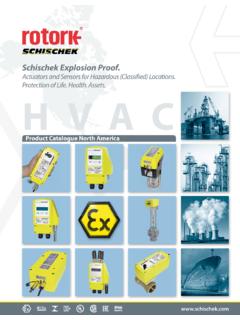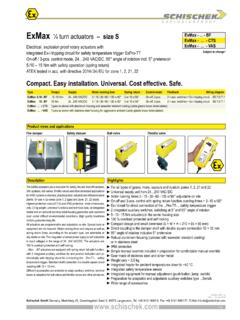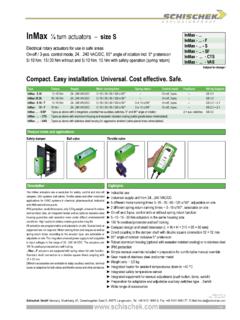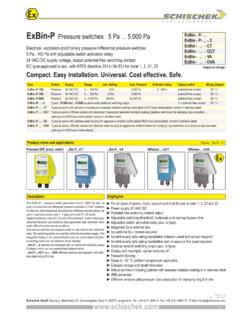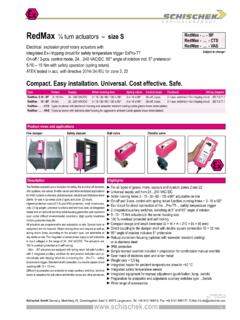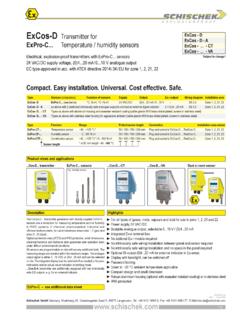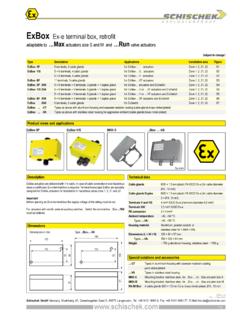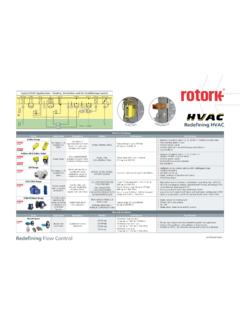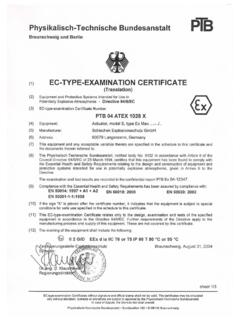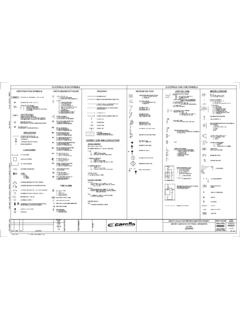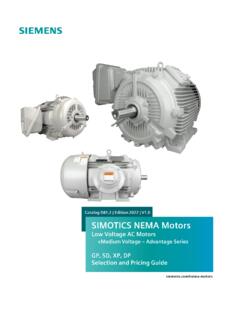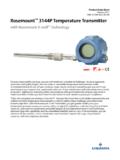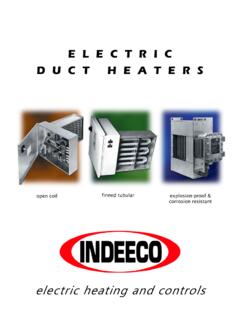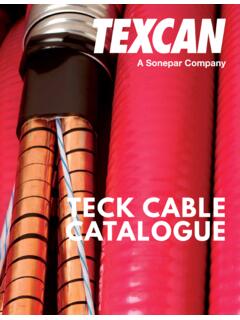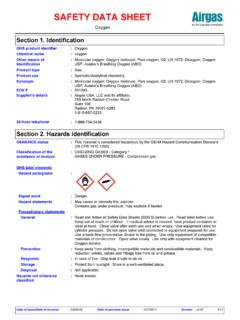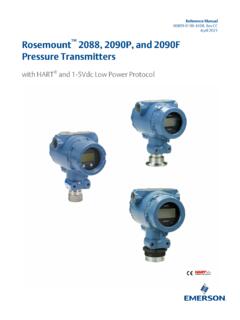Transcription of Labelling of explosion proof equipment - Schischek
1 12 ATEX 1007 X0158 II 2 GEx dbIICT6 IIIIIIIIIIIIT3<200 CT4<135 CT5<100 CT6<85 CEx ddadbdctatbtcpxbpybpzcmambmcnCnRiaibiceb ecobocqbEx eEx iEx pEx mEx oEx qEx nEN 60079-7EN 60079-11EN 60079-2EN 60079-18EN 60079-6EN 60079-5EN 60079-1522 XU2G3G2D3D1 DIIAIIBIICZone 0 Zone 1 Zone 2 Zone 20 Zone 21 Zone 22 II 2 DEx tbIIICT80 CEx tEN 60079-3120, 21, 2221, 2222EN 60079-1T2<300 CT1<450 C012345768IP 1G1, 2, 21, 221, 2, 21, 222, 22 GaGbGcGbDaDbDcIIICIIIBIIIADbIP661, 20,1 ,2,20,21,221,2,21,222,220,1 ,2,20,21,221,2,21,222,220,1, 21, 221, 221, 22 Flammable mediumHazardous locations Probability of a potentially explosive atmosphere occuringClassification of hazardous locationsProduct classificationProduct groupProduct categoryClassification and Labelling of hazardous locationsExamples depending on- explosion group- temperature classClassification explosion groups & Temperature classes (gases, mists, vapours)ExplosiongroupGases,mists,vapour sDustsContinuously, for long periods or frequentlyLikely to occurInfrequently and for short periods onlyContinuously, for long periods or frequentlyLikely to occurLabelling of explosion proof equipmentAmmoniaMethaneEthanePropaneEtha nolCyclohe-xenen-ButanePetrolDiesel fuelFuel oiln-HexaneAcetal-de-hydeCity gasAcrylic nitrileEthyleneEthyleneoxideEthyl glycolCarbon hydrogenEthyl etherHydrogenAcetyleneCarbon disulphideTemperature classProduct use depending on temperature class (T1 - T6).
2 The temperature class indicates the max. temperature of the exposed surface of the product. For dust explosion proof , the max. surface temperature is directly shown ( T80 C).Example:PTB (Germany)EXAM (Germany)01020158 CodenumberNotified Body (NB)Prevents transmission of the explosion outsidePrevents high temperatures and sparksLow current/ voltage supplyPositive pressure deviceEncapsulatedParts immersed in oil to isolate from explosive atmospherePrevents transmission of explosion outside As above, but for use in zone 2flameproof enclosureincreased safetyintrinsic safetypressurisedapparatusmouldingoil immersionpowder fillingprotection n Notified bodiesProtection principleCodeProtection principle Type of protection EN 60079-0 General RequirementsSym-bolTo usein zoneCENELECType of protectionApplicationCodeFurther informationFor common useFor use under special conditionsThis part is an Ex component and certified as such and is therefore not suitable for use on its ownCE conformity is achieved by incorporation into equipmentDust explosion proofprotection byenclosuretotally protected against dustdust - limited ingresssolids objects > 1 mmsprays from all directionssolids objects > 2,5 mmdirect sprays up to60 from verticalsolids objects > 12.
3 5 mmdirect sprays up to15 from verticalsolids objects > 50 mmvertical fallingdrops of waterno protectionno protectionlow pressure jetsfrom all directionsstrong jets of waterthe effects of tem-porary immersionlong periods ofimmersionProtection againstsolids/dustProtection againstwaterIngress Protection EN 60529 Infrequently and for short periods onlyEquipmentprotectionlevel(EPL)conduct ive dustnon conductive dustflammable fibresCodeDust classificationAttention: this list is only an extract of possible flammable mediums and does not claim to be complete ! Codetotally protected against dust5EN 60079-18EN 60079-6768 NB 12 ATEX 1007 XGbDbGbTemperature classTemperature classTProduct use depending on temperature class (T1 -class indicates the max. temperature of the exposed surface of the product. For dust explosion proof , the max. surface temperature is T80 C).Product use depending on temperature class (T1 -class indicates the max.)
4 Temperature of the exposed surface of the product. For dust explosion proof , the max. surface temperature is T80 C).Product use depending on temperature class (T1 -T6).class indicates the max. temperature of the exposed surface of the EN 60079-15EN 60079-6EN 60079-5EN 60079-15T80 CT80 CDbnon conductive dustflammable fibresEN 60079-31 CENELEC2EN 60079-3120, 21, 2221, 2222IP66 Sym-To useTo useTin zoneCodeconductive dustnon conductive dustDust classificationIIIC conductive dustnon conductive dustDust classification totally protected 5EN 60079-15EN 60079-31in zoneconductive dustnon conductive dustDust classificationGbTProduct use depending on temperature class (T1 -class indicates the max. temperature of the exposed surface of the product. For dust explosion proof , the max. surface temperature is T80 C).T80 CIIICExnParts immersed in oil to isolate from explosive atmospherePrevents transmission of powder fillingprotection n 3 DDbDcproduct.
5 For dust explosion proof , the max. surface temperature is directly shown ( <200 CT4T4T<135 C<100 CT2T2T<IIBIIC300 CT1<450 CEthyleneEthyleneoxideHydrogenAcetyleneA ttention: this list is only an extract of possible flammable this list is only an extract of possible flammable mediums and does not claim to be completmediums and does not claim to be complet II 2 GEddadbdcEN 60079-7 II 2 DEN 60079-10,1, 21, 221, 2flameproof pxbpybmbmciaibicecobocExeExiExmExo1, 2, 21, 221, 2, 21, 222, 2212,220,1,2,201,2,21222increased safetyintrinsic safetypressurisedapparatusmoulding II 2 GEx dbIIC II 2 DEx tbIIICT80 C Labelling of explosion proof equipment according to ATEX 2014/34/EUClassification and Labelling of hazardous locationsClassification explosion groups & Temperature classes)
